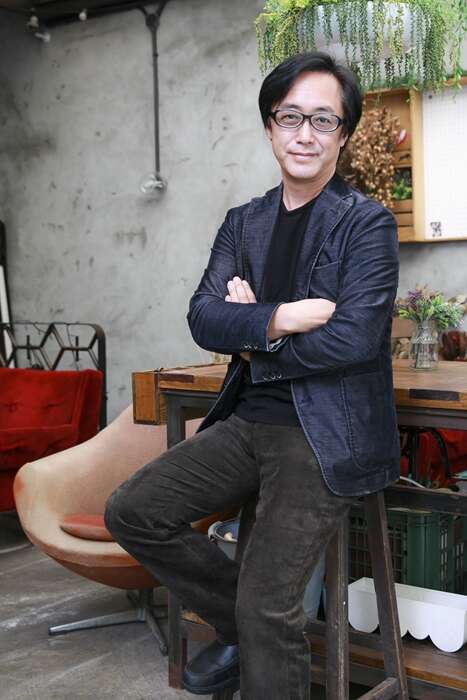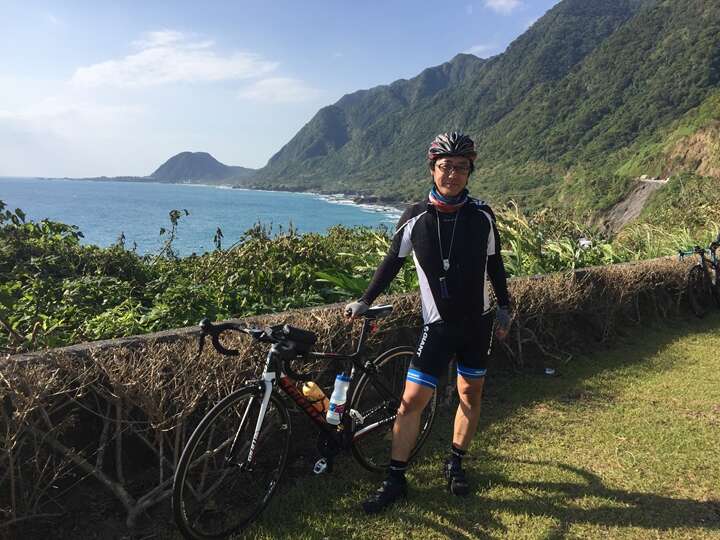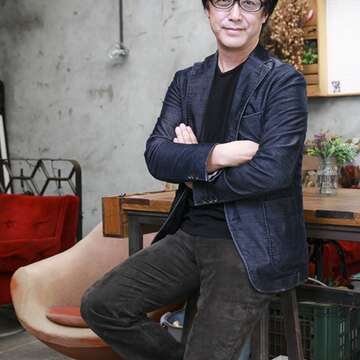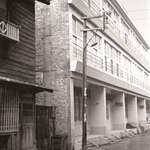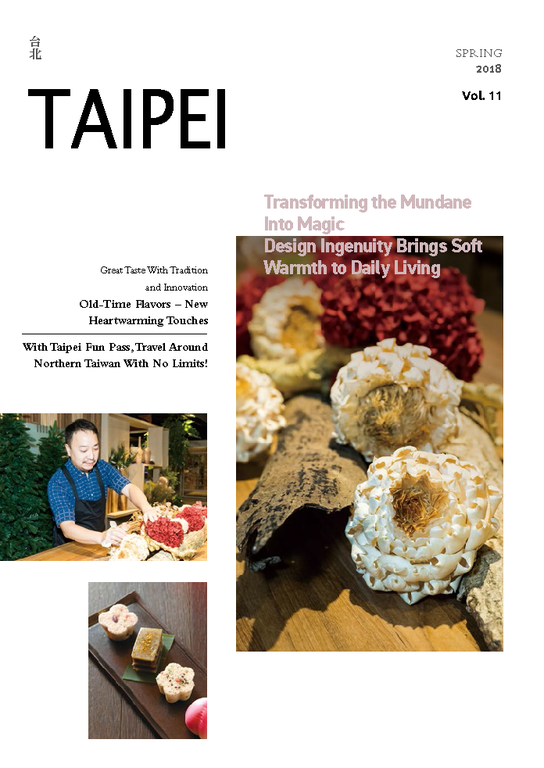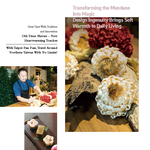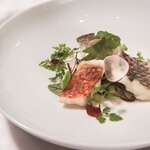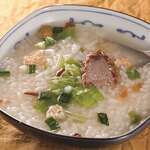Post date:2018-03-19
1496
Walk, Think and Write
Nojima Tsuyoshi Savors Taipei
Article |Jiang Xinying
Photos |Shi Chuntai, Nojima Tsuyoshi
Taipei is small and you can do a lot of things in one day.
On a typical winter morning, Nojima Tsuyoshi (野島剛) leaves his workshop and walks to Shinshan Soymilk store on Chaojou Street (潮州街). The steaming soy milk makes it warm in the store; the bite of sesame flatbread (燒餅) and the sip of soymilk are both heartwarming and refreshing. With a full belly, he goes on to the National Library (國家圖書館) on Zhongshan South Road (中山南路) to do research. It takes only 20 minutes or so to go from Guting (古亭) to Chiang Kai-shek Memorial Hall (中正紀念堂), whether by bus, MRT or taxi. At noon, he wanders about Ximending (西門町). Familiar streets and favorite shops are the key elements for a comfortable shopping trip. He has made up his mind about the choice for lunch: Jingmanyuan Pork Chops (金滿園排骨). A simple meal on his perambulations makes for a sweet memory in the future. This afternoon, he doesn’t want to waste the rare winter sun, so he decides to ride a YouBike to the movie coffee shop on Linyi Street (臨沂街), and then considers his next step. This is Nojima Tsuyoshi’s day-off, and a typical day-off for most Taipeiers, as well.
“It’s a beautiful day today,” says writer Tsuyoshi after he arrives by YouBike. We start chatting casually about the weather, which is a typical way to start a conversation in Taipei. As 1990 was the year he first came to the city, he has had 28 years to get to know it. He was an exchange student in journalism back then; in the daytime, he studied Chinese at National Taiwan Normal University (國立台灣師範大學), and by night, taught Japanese at various enterprise companies. This period didn’t last long, but it allowed him to learn a different language, make new friends, and get to know Taipei better. The fried chicken, Taiwan beer and pool matches he often enjoyed after a long day have made a memorable impression on his heart.
Observe Taiwan, Savor Taipei
After graduation, Tsuyoshi joined the Asahi Shimbun Company and devoted himself to his career in journalism, which he pursued for 25 years, until 2016. During that time, he’s worked as a war correspondent and reported on Afghanistan and Iraq in both words and photos; he was also stationed in Singapore and in Taiwan as a special correspondent, specializing in the complicated political culture of Greater China. Reporting news overseas requires both mobility and writing acumen. Unlike the more conservative media environment in Japan, his more open and friendly interviewer role in Taiwan has given Tsuyoshi more press freedom, and the chance to tell stories from deeper and wider angles. His unique opinions on Taiwan come from his understanding of international politics and history, and his keen observations on Taiwanese society.
“Taipei is a window through which tourists can learn about Taiwan; the urban environment basically determines international visitors first impressions about the country as a whole.” Tsuyoshi prefers Huashan and Songshan Cultural and Creative Parks to the usual spots tourists seek out: Taipei 101, Dadaocheng and Bangka. To him, the cultural parks are the nexus of Taipei’s creativity, where one can feel the imagination and determination of youth, as well as the Taiwanese core values of multiculturalism and ethnic integration.
About cuisine, he teases, saying, “In Taiwan, the cheaper food tastes better.” Tsuyoshi thinks that in the minds of foreign tourists, the most attractive thing about Taiwan is its authentic cuisine. In addition to the well-known beef noodles, xiaolongbao (small steamed bun with juicy stuffing) and night market food, Hakka dishes are also popular with him. He has discovered that bantiao (flat rice noodles; 粄條) and classic Hakka Stir Fry (客家小炒) both go well with beer! It seems the special features of this type of cooking, containing sweet, salty, savory and sour flavors, are perfect for Japanese taste buds. So far, he has found authentic Hakka food in Taipei, Miaoli (苗栗), Hsinchu (新竹) and Kaohsiung (高雄). He suggests any of these places as a first stop in exploring local cuisine, followed by a trip to the west coast and the food of the ethnic Taiwanese, and then the eastern mountains and the traditional dishes of the indigenous people.
Cycling the Land to Write and Think
“There are things that if you don’t do them now, you’ll never do them.” – From the Taiwanese film, Island Etude
Inspired by the Taiwanese movie, Island Etude (練習曲), Nojima Tsuyoshi planned and completed a cycling tour of Taiwan in October, 2017. He and more than twenty companions started from Taichung (台中), biking anticlockwise around the island’s Cycling Route No. 1 (環島1號線), as designated by the Ministry of Transportation and Communications (交通部). The whole trip took nine days, during which the cyclists took in some amazing scenery along the South Link Highway (南迴公路) in Pingtung (屏東) as well as in the Changbin (長濱) section of Taitung (台東). The route from Checheng (車城) to the road’s highest point at Shouka (壽峠) stretches 20 kilometers and gains about 460 meters in elevation. Buffeted by strong coastal winds, this route has certainly earned its popular sobriquet: ”The Cycling Road to Heaven.” Although the ride is a workout, Tsuyoshi insists, “It’s worth it. It makes you want to do it again.” He believes that seeing Formosa by bike gives you an enhanced experience of depth and width. The convenience and the speed of a bike is great for in-depth exploration, and, moreover, touring the island on a velocipede gives one a chance to see different types of landscape and scenery of many counties and towns. An experience of different cultures and manifestations of humanity may be encountered. So, he believes that promoting this method of travel should be a new mandate for the Taiwanese tourism industry.
When Tsuyoshi collects his thoughts for writing, he usually starts with daily observations. Taiwanese movies provide him with subject matter to focus on. A movie often contains the shared memories of a generation, and social issues can be discovered in its content. He writes about history, politics, culture and life, analyzing contemporary people and themes. His insights are accurate and sharp, and his writing style calm and contained. He notes, “Writing is an exercise in self-exposure; a little like dancing in front of people. Writing is a way to converse with society, so a writer needs to avoid bringing in personal emotions. Writing in a contained style will add beauty to any article.”
Since leaving Asahi Shimbun, he has focused on his freelance work, including his columns, and on giving speeches. He now has more time to visit different places in Japan and Taiwan, and believes that focusing on writing is the correct decision. In his creative process, Taipei is never absent. Traveling and writing are his ways to spend time with a city alone. Travelers capture moments with their cameras, and writers define their coordinates using words. Through his words, Nojima Tsuyoshi describes the look of the place he’s occupying at the moment.
Nojima Tsuyoshi
Writer and journalist
Nojima Tsuyoshi is a writer and journalist of note. He worked for the Asahi Shimbun Company of Tokyo until 2016 when he started his freelance career. His works include The Enigma of the Painting: Along the River during Ching-ming Festival (謎樣的清明上河圖), Ginrin No Kyojin (銀輪巨人:挑戰巔峰的捷安特精神), Ten Years of Changes in Taiwan (台灣十年大變局:野島剛觀察的日中台新框架), and Those Things that Japanese People Are Quietly Thinking (日本人默默在想的事:野島剛由小見真的文化觀察). All of these are available in Japanese and Chinese editions. Currently he writes columns for media outlets in Taiwan and Japan.
Shinshan Soymilk Store
This soymilk purveyor is over 60 years old, and offers authentic Chinese breakfast items, such as soymilk, sesame flatbread, steamed buns (饅頭), egg crepes (蛋餅), and fried radish cakes (蘿蔔糕). Locals and foreign tourists alike love the simple yet memorable taste, which is definitely worth trying!
35, Chaojou St., Daan Dist. (MRT Guting Station, Exit 6)
05:30~12:30
(Photo: Shi Chuntai)
Jinmanyuan Pork Chops
Operating in Ximending for 45 years, Jinmanyuan’s specialty “pork chop rice” includes one deep-fried chop, three side dishes, some pickles and a bowl of soup. The perfectly cooked chop is tender and juicy, and enhanced with black pepper. This simple combination presents an impressive taste.
1, Aly. 3, Ln. 82, Sec. 2, Wuchang St., Wanhua Dist.
11:00~21:00 (Closed on Wed)
(Photo: Nojima Tsuyoshi )
Gallery
Popular articles
 TAIPEI QUARTERLY 2018 SPRING Vol.11
TAIPEI QUARTERLY 2018 SPRING Vol.11 Walk, Think and Write Nojima Tsuyoshi Savors Taipei (TAIPEI QUARTERLY 2018 SPRING Vol.11)
Walk, Think and Write Nojima Tsuyoshi Savors Taipei (TAIPEI QUARTERLY 2018 SPRING Vol.11) Avid Explorer of Our Globe's Cultures Jasmine Huggins, Ambassador of Saint Christopher and Nevis to the Republic of China (Taiwan) (TAIPEI QUARTERLY 2018 SPRING Vol.11)
Avid Explorer of Our Globe's Cultures Jasmine Huggins, Ambassador of Saint Christopher and Nevis to the Republic of China (Taiwan) (TAIPEI QUARTERLY 2018 SPRING Vol.11) The Perfect Temperature Jewel Tsai's Elegant Homemade Banquet (TAIPEI QUARTERLY 2018 SPRING Vol.11)
The Perfect Temperature Jewel Tsai's Elegant Homemade Banquet (TAIPEI QUARTERLY 2018 SPRING Vol.11) Turning Local Ingredients Into an Amazing Feast Vincent Chen Pursues Original Flavors (TAIPEI QUARTERLY 2018 SPRING Vol.11)
Turning Local Ingredients Into an Amazing Feast Vincent Chen Pursues Original Flavors (TAIPEI QUARTERLY 2018 SPRING Vol.11) The Ideal Taiwanese Breakfast: Authentic Salty Congee (TAIPEI QUARTERLY 2018 SPRING Vol.11)
The Ideal Taiwanese Breakfast: Authentic Salty Congee (TAIPEI QUARTERLY 2018 SPRING Vol.11)
 Walk, Think and Write Nojima Tsuyoshi Savors Taipei (TAIPEI QUARTERLY 2018 SPRING Vol.11)
Walk, Think and Write Nojima Tsuyoshi Savors Taipei (TAIPEI QUARTERLY 2018 SPRING Vol.11)